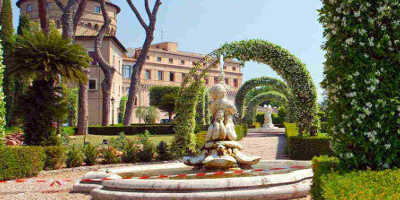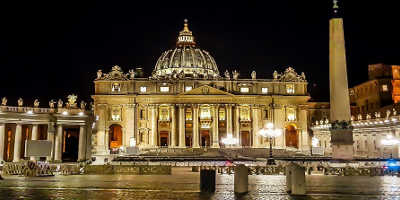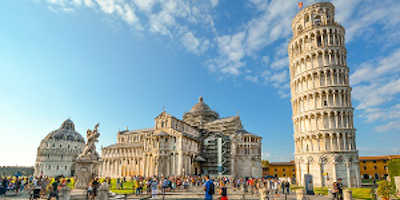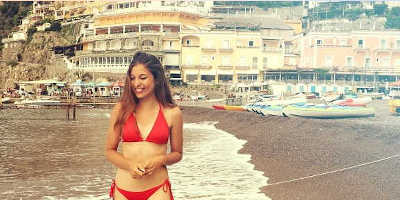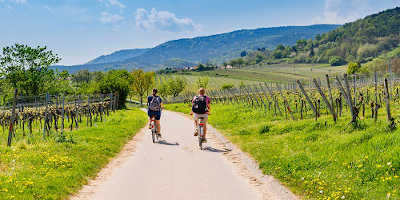How did the Vatican Gardens Begin?
The exclusive Vatican Gardens are a tranquil paradise away from the crowds. They make up a 1/3 of the entire Vatican City, stretching across 109 acres hosting history, art, and a wide range of wildlife.
The perfectly manicured gardens of the Vatican City are often overlooked for its other main attractions – St. Peter’s Basilica, Sistine Chapel and the Vatican Museums – leaving visitors surprised by the large stretches of greenery. Covering more than half the Vatican, these beautifully looked after gardens contain grottoes, monuments, fountains, trees and footpaths. Visits are by guided tour, either on foot, which can take up to 2 hours or by open-air bus which takes around 45 minutes. Whichever tour you go for you need to make sure you book at least a week in advance to avoid disappointment. Before you go, however, why not find out more about the Gardens and how they came to be.
The Garden’s Birth
The gardens were first conceived in 1279 by Pope Nicholas III back in medieval times when orchards and vineyards extended to the north of the Papal Apostolic Palace. Originally meant for the cultivation of medicinal plants, protection for his residence, and a place for tranquil reflection, it wasn’t until the 16th century that major landscaping of the gardens took place under Pope Julius II. Distinguished architect Donato Bramante (one of the designers for St. Peter’s Basilica) drew up plans for the garden, which was eventually split into three Renaissance styles (English, French, and Italian). A rectangular maze was added to further enhance its formal grandeur. The gardens expanded into a playground for the Popes and a backdrop to religious beliefs and art movements. Throughout history, each Pope would add their own part of the garden, whether it was issuing a new statue by a famous artist during that time. Or by extending the gardens to include a topical themed display. Nowadays, the garden is full of medieval fortifications, ancient buildings and art monuments that date back to the 9th century. It promises a place of tranquillity where Pontiffs can go to find restful solitude, despite the hustle and bustle of Rome and Vatican City just beyond the garden wall.
What You Can See in the Gardens of Vatican?
The gardens are not just full of tranquil greenery, but artworks, grottoes, monuments, and stunning fountains. Within the area, there are three different landscaping styles; English, French and Italian. Each area has different flora that compliments the artworks that line the walking paths. Noteworthy attractions include the medieval Saint John’s Tower, which promises a jaw-dropping view of the gardens and the surrounding city, as well as the Fountain of the Eagle, which is a spectacular fountain that represents a return of water to the Vatican from the Acqua Paola. Other features to look out for include:
-
The Lourdes Grotto
This is a replica of the pilgrimage cave in Massabielle, France, where a young girl called Bernadette Soubirous saw a vision of the Madonna.
-
Papal Coat of Arms
You simply can’t miss this wonderfully clever bit of art. Made from carved and trimmed hedges, this Papal Coat of Arms features a crown and the keys of St. Peter planted in colourful perennials, whilst the other area is adorned with annuals honouring the current Pope. You’ll want your camera out for this one!
-
Gardener’s Lodge
This little building dates from the 12th century and acts as the residence of the head gardener, who oversees a team of more than two dozen gardening staff.
-
Saint John’s Tower
Constructed in the 16th century by Pope Nicholas III, it was rebuilt in the 1960s by Pope John XXIII. Inside are papal apartments, but it is most famous for being the place where Pope Benedict XVI met President George W. Bush in 2008.
-
Palazza di Leone XIII
Consider the “instagrammable” spot of the Gardens, this small building was erected in honour of Pope Leo XIII. It contains two lovely fountains, green hedges, arches of climbing roses, and the last exotic tree planted by Leo before his death in 1903.
Hopefully this list of highlights gives you an idea to the size and value of the Vatican Gardens. This is only a handful of some of the things you can expect to see whilst strolling around this green haven. Let yourself relax and your mind wander as you explore the space which has been the escape for many Pope’s throughout history.
How to See the Gardens of Vatican?
The Vatican Gardens are quite the exclusive place, only letting in a select few people each day. Visitors must pre-book beforehand, as availability sells out fast. Not all days are open to the public, so it’s best to check the schedule when you arrive in Rome, or even before your trip. Due to these restrictions, booking onto a tour is the only way you can visit the gardens. There are different tours on offer, giving you the choice of going on foot, by bus, privately or not privately, the choice is really yours. Look carefully through them and find one that suits you. Opening hours for the Gardens may vary throughout the year, but generally, they are open Monday – Saturday from 9 am to 6 pm (with final entry being at 4 pm). Ticket prices cost 33 euros, with reduced prices available for children and students. If you have reduced mobility we recommend booking onto the open-air eco-bus tour, which is available from 37 euros and includes an audioguide and illustrated map. To get to the Gardens via public transport, you can get the bus, tram or the metro, just check schedule times beforehand so you’re not late for your tour.



